

|
Soundclip:
|
| See Steve's Hand-Written Solo transcription |
|
Chick Corea's
solo on: 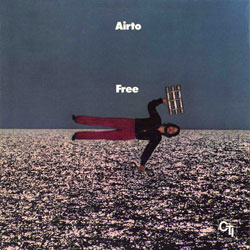 One of the hidden gems on this recording was a tune, composed by Brazilian saxophonist, Victor Assis Brasil, titled "Creek"(Arroio) which featured: Chick Corea(Ac. Piano); Ron Carter(Ac. Bass); Joe Farrell(Soprano Sax & Flute); Nelson Ayres(Fender Rhodes); and Airto(Drums & Percussion). Of course, this album was recorded out in Englewood Cliffs, New Jersey by the great Rudy Van Gelder. One of the hidden gems on this recording was a tune, composed by Brazilian saxophonist, Victor Assis Brasil, titled "Creek"(Arroio) which featured: Chick Corea(Ac. Piano); Ron Carter(Ac. Bass); Joe Farrell(Soprano Sax & Flute); Nelson Ayres(Fender Rhodes); and Airto(Drums & Percussion). Of course, this album was recorded out in Englewood Cliffs, New Jersey by the great Rudy Van Gelder.The composition is notably marked by its virtuoso melody, consisting of running double-time 8th-notes and a 16-bar solo format that differs from the form of the 22-bar melody. However, when performed like this, everything is perfectly executed and in its place. Generally speaking, the chords used in the solo format are very much related to those that appear during the head. The big difference is that the first 8 bars of the solo format are just over an F7 sonority, whereas during the melody the chords alternate between a bar of F7 and a bar of Bb7. The tune has a particular samba swing generated by Airto's fantastic drumming, which is one of his most underrated talents. What Airto brought to our music, here in the United States, was an immeasurable gift. One that changed so much about how we have come to view the possible when we play. He is an innovator of the highest order. On the recorded version, after the statement of the head, the great Joe Farrell solos brilliantly, as he maintains the voluminous flow of double-time lines. When Chick Corea's 8 chorus solo arrives, it is like a breath of wonderful fresh air, and a reminder to all of just how great an instrument the acoustic piano is when it's in such monstrous and capable hands, and guided by a most unique musical imagination. One must remember that during these years, the late '60s and early '70s, the acoustic piano and acoustic bass were being forgotten as part of the dictates of the Jazz-Rock Fusion era. Chick begins [Chorus 1] with a wondrous chordal fanfare which spans the first 8 bars over the F7 chord. I don't believe for a moment that pianists, keyboard players view harmony in this way, but, the first voicing that fundamentally outlines Bb-Eb-F-Bb (spelling up) is a common sound on the guitar but we tend to think of it as Cm7(sus). So, when you view that over F7, this is one way to create the suspended feeling. Throughout the solo, I will try to point-out similar moments, and you can decide for yourself if and how you might choose to use this in your own playing. Chick anticipates the arrival of the Bb7 chord in bar 9 by hammering out his characteristic staccato 8th-notes and employing notes from the Bb dominant 7th pentatonic [Bb, C(9th), D, F, Ab]. 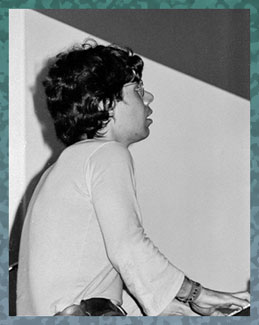 Notice how wonderfully aggressive his time feel is as he accentuates the first 8th-note in every grouping of 4. As the Eb7 arrives, the first four notes, Eb-F-Ab-Bb, are all part of F minor pentatonic [F, Ab, Bb, C, Eb], which is one of the more interesting pentatonic options over any static dominant 7th chord. Over the C7, his descending line from Bb is almost totally chromatic until he arrives at Eb(#9)-Db(b9) to cadence to F7. In the Jazz linear vocabulary, employing the #9-b9 is a very traditional way to arrive at any I chord, major or minor. Notice how wonderfully aggressive his time feel is as he accentuates the first 8th-note in every grouping of 4. As the Eb7 arrives, the first four notes, Eb-F-Ab-Bb, are all part of F minor pentatonic [F, Ab, Bb, C, Eb], which is one of the more interesting pentatonic options over any static dominant 7th chord. Over the C7, his descending line from Bb is almost totally chromatic until he arrives at Eb(#9)-Db(b9) to cadence to F7. In the Jazz linear vocabulary, employing the #9-b9 is a very traditional way to arrive at any I chord, major or minor.[Chorus 2] offers a reminder of what a great Latin music player Chick Corea has always been. I remember how much I loved discovering Chick Corea's playing during the late, 1960s. At this site, I have often mentioned how important Chick's appearance on Cal Tjader's 1966 album, "SOUL BURST"(Verve) was for me. His playing on that recording has influenced everything that I have done in one form or another. Here, his unison lines, some 2 octaves apart, replete with his accentuated grace notes of this time period, continue with a very diatonic approach using modal tones and triads, all derived from F Mixolydian [F, g, A, Bb, C, D, Eb] for the first 3 bars. After taking a breath, over the Bb7 chord, the first blue-note, Db(m3rd), appears. Over the Eb7 chord, as the double octave unison lines continue, you hear some Jazz-related chromaticism, and again over this chord we hear F-Eb-Ab-Db-Bb, all notes found in the Bb minor pentatonic. Over the C7 chord, with his left hand, he plays a three-note voicing typical to his style, or anyone influenced by McCoy, which indicates the guts of a C7(13) chord via Bb-E-A(13th) (spelling up), and this is followed by C-F(sus4)-Bb which offers the more suspended harmonic feeling. Or, as I like to view things, he is overlaying a sense of Gm7 on top of the C7 to produce the extensions. Finally, in bars 15-16, Chick plays a rapid chromatic chordal burst featuring all dominant 7th(9) voicings with the 5th on top, extending from C7(9) all the way up to G7(9). Finally, he takes a breath. In [Chorus 3], Chick offers another stylistic technique from this time in his playing that features clusters answered by 2nds, and banged out with both hands. If you notice the tightly grouped 3-note voicings in the left hand: Bb-Eb-F up to C-F-G, these are thematically connected to the sonorities with which he opened the solo! Once again, he provides linear momentum into the chord change to Bb7 with running 8th-notes. Within this line, I especially love the usage of the B-natural(b5) in bar 8 followed by the more expected Bb on beat 3. On the last 8th-note of bar 8, notice the 3-note Fm7(9) voicing on the and-of-4, and this is followed by the stylistically common voicing in 4ths: Bb-Eb-Ab in bars 9-10. Over the Eb7 chord in bars 11-12, his line is a nice blend of modal tones which give way to more chromaticism. As he goes down in register, playing well below middle-C, the ascending line that begins in bar 14 is also very characteristic of this time period in Chick's playing. I saw the initial Return to Forever numerous times during these years, and I recall watching Chick play many passages while soloing where he employed one and two fingers from each hand. Though I am only guessing as to which hand was doing what, I tried to indicate how he might have executed this complex passage. After the flurry of notes that closed the prior 16 bars, [Chorus 4] begins with a lot of space and breathing through the first 4 bars of F7. But, even if the right hand might be resting, or less active, there is plenty going on in his left hand. 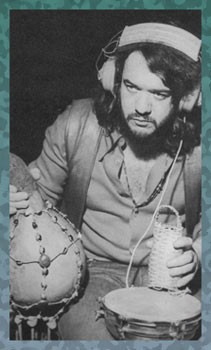 Notice that he is using a voicing in 4ths, Bb-Eb-Ab, which, because of the Ab, is not what you might expect over a very consonant sounding F7. However, this is the beauty of being the only chordal instrument playing. This gives you the license and freedom to create whatever kind of harmonic texture you might be hearing in that moment. It is important, in my opinion, to pay attention to the first voicing in bar 4 which is an Eb triad. This could also be viewed as the guts of Cm7. Again, you can think of this as playing iim7(Cm7) chord sonorities over what is really a V7(F7) chord. The single-note lines that begin at the end of bar 4 are very diatonic, but you can hear strains of the F dominant 7th pentatonic [F, G, A, C, Eb], especially in bars 5-6. During all of this activity, notice how his left hand is alternating between that Eb triad and a voicing in 4ths: C-F-Bb. Melodically, I have always loved hearing the way these voiciings, in this key, move between G-natural as your top note up to Bb. In bar 10, over the Bb7 chord, Chick ascends to a high F-natural that arrives just before the Eb7, and this begins a rhythmic sequence that emphasizes a sense of 3 over the cut-time feeling of this samba. Now that we've changed chords, notice the left hand, and you can hear a simple motion, this time from a Db triad, the guts of Bbm7, to the 4ths voicing of Bb-Eb-Ab. As the line continues over the C7 chord in bars 13-16, notice that in the left hand, everything is harmonized with 7(13) or 7#9 voicings from Bb7(#9) [D-Ab-Db] to C7(#9) [E-Bb-Eb], eventually touching upon our C7(13) sound [Bb-E-A]. In his right hand, you see lots of the altered tones: F#/Gb(b5), Db(b9), Eb(#9). On the last beat of the phrase, beat 4 of bar 16, the G-natural sets-up the wonderful sequential line to come. Notice that he is using a voicing in 4ths, Bb-Eb-Ab, which, because of the Ab, is not what you might expect over a very consonant sounding F7. However, this is the beauty of being the only chordal instrument playing. This gives you the license and freedom to create whatever kind of harmonic texture you might be hearing in that moment. It is important, in my opinion, to pay attention to the first voicing in bar 4 which is an Eb triad. This could also be viewed as the guts of Cm7. Again, you can think of this as playing iim7(Cm7) chord sonorities over what is really a V7(F7) chord. The single-note lines that begin at the end of bar 4 are very diatonic, but you can hear strains of the F dominant 7th pentatonic [F, G, A, C, Eb], especially in bars 5-6. During all of this activity, notice how his left hand is alternating between that Eb triad and a voicing in 4ths: C-F-Bb. Melodically, I have always loved hearing the way these voiciings, in this key, move between G-natural as your top note up to Bb. In bar 10, over the Bb7 chord, Chick ascends to a high F-natural that arrives just before the Eb7, and this begins a rhythmic sequence that emphasizes a sense of 3 over the cut-time feeling of this samba. Now that we've changed chords, notice the left hand, and you can hear a simple motion, this time from a Db triad, the guts of Bbm7, to the 4ths voicing of Bb-Eb-Ab. As the line continues over the C7 chord in bars 13-16, notice that in the left hand, everything is harmonized with 7(13) or 7#9 voicings from Bb7(#9) [D-Ab-Db] to C7(#9) [E-Bb-Eb], eventually touching upon our C7(13) sound [Bb-E-A]. In his right hand, you see lots of the altered tones: F#/Gb(b5), Db(b9), Eb(#9). On the last beat of the phrase, beat 4 of bar 16, the G-natural sets-up the wonderful sequential line to come.[Chorus 5] offers a brief but wonderfully developed musical idea that seems to come from the diminished arpeggio born of an F7b9 sound where you might see: F-A-C-Eb-Gb(F#). However, all that aside, in the right hand for the first 4 bars, Chick again references that sense of Cm7/F with the Eb triad (w/ G on top) moving back-and-forth between the 4ths voicing with Bb on top. In bars 5-8, over this same F7, his left hand switches to a small cluster (D-Eb-G), which might remind many keyboard enthusiasts of the late, great Bill Evans. Meanwhile, though way in advance of bar 9 and the actual arrival of the Bb7 chord, you see his lines framing Bb7 several times. Notice D-F-Ab-Bb, and from bar 5-7, you have Ab-Bb-Ab-F-D, and even down to the blue note of Db. Once again, to anticipate the arrival of Bb7, on the and-of-4 in bar 8, you see the left hand playing the guts of Bb7(13) (Ab-D-G). This time, Corea's line takes him up to the stratospheric regions of the piano, and I love how, on beat 1, he plays a B-natural, and then, on beat 3, he brings it down a half-step to Bb. His time feel is so insistent as he continues to accentuate beats 1 & 3 with lines that are often very pentatonic related. Pay attention to his left hand throughout, especially the usage of the Db triads in bars 11-12 over the Eb7 chord. As the C7 sonority arrives in bar 13, notice the 7#9 voicing in the left hand (E-Bb-Eb). With that played, you might expect more altered tones, but, up until the Eb at the end of bar 15, everything is right out of C Mixolydian [C, D, E, F, G, A, Bb]. Once again, his rhythmic self-confidence comes into play as he displaces the beat with a wonderful usage of accents. For this listener, [Chorus 6] serves as yet another reminder of the innovative playing Chick Corea began to display in the late '60s. Around that same time, in 1967, I also heard him playing over various standards on the two volume All-Star Jam Session recording, then titled: "JAZZ FOR A SUNDAY AFTERNOON"(Solid State). On these recordings, which featured luminaries such as: Dizzy Gillespie, Marvin Stamm, Pepper Adams, Joe Farrell, Garnet Brown, Ray Nance, Richard Davis, Mel Lewis, and Elvin Jones, harmonically and linearly speaking, Chick's playing seemed to be in the future, while some of these greats were tied to the language of the past. So, when I hear a chordal passage like the first 4 bars of this chorus, I am reminded of his exceptionally unique gift for putting his own personal stamp on the influence of the great McCoy Tyner. Listening to this kind of harmony, the word that always comes to mind is majestic! It is simply the best word that I can think of to try to describe the sensation that I feel when I hear a passage like this. In addition to the expected sounds, there are, of course, particular voicings, in this style, that are unique to Chick, in my opinion. 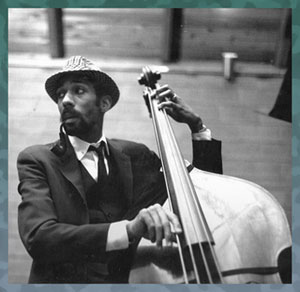 Sometimes, when I am doing a transcription like this, especially on a foreign instrument like the piano, after a time, my ears begin to play tricks on me, and, for a time, I can think that I am actually hearing a note, when it is highly possible that it's not even there. Or that, when improvising, no piano player would really do such a thing. So, if you're reading through the transcription and you feel that I've put in an extra note, please forgive me for being a bit over zealous. Bars 5-8 offer another prideful fanfare with left hand sonorities that bring us back to the very first bars of the solo. This is just part of having an improvisation be one long continuous thought that develops and doesn't leave everything completely behind. In a most sophisticated way, the voicing on top: Bb-F-A might be viewed by some guitarists as being related to Gm7(9). This is a perfectly wonderful sonority over an F7 chord. As we finally arrive at bar 9 and the Bb7 chord, Chick draws from another great Jazz tradition, and that is to rhythmically ride a single note, and let rhythm section play around you. But in this case, Chick supplies his own interplay with his left hand. Notice the syncopated upbeats with alternating voicings in 4ths over the Eb7 chord in bars 11-12, with a Db triad thrown-in for good measure. During bars 13-16, his left hand begins with the consonant chordal sound of C7(13), but from there, that same 3-note configuration moves around eventually touching upon C7#9 on the and-of-2 in bar 15. Sometimes, when I am doing a transcription like this, especially on a foreign instrument like the piano, after a time, my ears begin to play tricks on me, and, for a time, I can think that I am actually hearing a note, when it is highly possible that it's not even there. Or that, when improvising, no piano player would really do such a thing. So, if you're reading through the transcription and you feel that I've put in an extra note, please forgive me for being a bit over zealous. Bars 5-8 offer another prideful fanfare with left hand sonorities that bring us back to the very first bars of the solo. This is just part of having an improvisation be one long continuous thought that develops and doesn't leave everything completely behind. In a most sophisticated way, the voicing on top: Bb-F-A might be viewed by some guitarists as being related to Gm7(9). This is a perfectly wonderful sonority over an F7 chord. As we finally arrive at bar 9 and the Bb7 chord, Chick draws from another great Jazz tradition, and that is to rhythmically ride a single note, and let rhythm section play around you. But in this case, Chick supplies his own interplay with his left hand. Notice the syncopated upbeats with alternating voicings in 4ths over the Eb7 chord in bars 11-12, with a Db triad thrown-in for good measure. During bars 13-16, his left hand begins with the consonant chordal sound of C7(13), but from there, that same 3-note configuration moves around eventually touching upon C7#9 on the and-of-2 in bar 15.[Chorus 7] extends the emphasis on the note C-natural, played in the same register as we saw it in Chorus 6. Here however, it is used as an isolated rhythmical punctuation, and notice how it always appears on beat 4. You see this thematic device in bars: 2, 4, 7, and 10. It is remarkable how many different ways, in such a short period of time that Chick Corea can use this one note. Notice how with each ascending phrase, more notes are added before that C-natural finally gets played forcefully on beat 4. To me, the emphasis is simply placed on swinging, there are not any super-duper hipster outside-the-tonality notes found in these first 10 bars. It is all very diatonic with notes from F Mixolydian again. I can't stress it enough, especially for the guitarists in the house, pay attention to the left hand. This is such a wonderful style. As the Eb7 chord arrives in bar 11, notice that this time, he is playing that little Bill Evans-type cluster, but here it is related to Bbm7(9) (C-Db-F). As this chorus comes to an end, I love the 3-note ascending chromatic phrases that all seem to be headed for chord tones, until one passes over a B-natural, which is a note that you shouldn't expect to hear over a C7 chord. But, as it is headed towards a D-natural, in context, you wouldn't even notice that the note had passed by. The final chorus, [Chorus 8], begins with another wondrous chordal passage, very much in the same harmonic style as I had pointed out for Chorus 6. If someone is reading this page, it is hard to imagine that you would not be aware of Chick Corea's magical and ground-breaking recording from 1968, "NOW HE SINGS, NOW HE SOBS," but, perhaps due to the ever-present generation gaps that must exist, it is worth pointing out this landmark album that remains a fantastic CD buy, because of the bonus tracks. In all there are 8 of them. The 8-bar chordal passage reminds me of all the great work that Corea did during the late '60s, just before joining Miles Davis, and then, eventually striking out on his own. On this solo, we are listening to him in 1972, just 4-6 years removed from the recordings that I have mentioned. 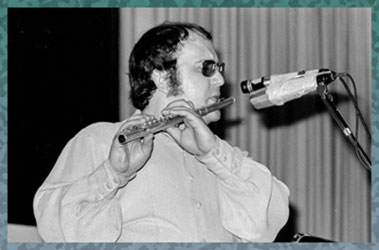 Thank goodness these superb stylistic elements have remained. Here again, it becomes clear that Chick has his own way of drawing from the Tyner musical legacy, but he heard another very personal way to express it. From the last phrase in the prior chorus, Corea lands on the small left hand voicing sonority that began the solo, in essence, it is: Bb-Eb-F. From there, at the end of bar 2, he launches into an extended sequence of chords that are almost exclusively tied to this very extension-oriented harmonic world. To me, the only real F7 type voicing appears on the and-of-4 in bar 3, and it is a rather typical F7(13) sound. Everything seems to be moving along, smooth and lush as can be, and then, suddenly in bar 6, there is a seismic harmonic shift. We are now in an area, and I spelled the notes this way on purpose, that is somewhere between B7 and F#m7. Why should that make some sense? Well, B7 is the b5 substitute for F7, and F#m7 is simply iim7 chord related to B7. Of course, lots of studious players associate this kind of device with the great John Coltrane. Finally, in bar 8, with the Bb7 chord looming ever closer, Chick drives us there with a very full sounding Bb7(9/13) voicing on beat 4. The solo closes out with some ingenious references to past elements. For example, in bars 11-12, he revisits the rhythmic ideas of the groupings of 3 over the cut-time feel, but this time, only for those two bars. Then, as he tries to neatly dovetail the last phrase into the reprise of the melody, Chick lands on nice G-natural(9th), and plays it with a trill. This speaks of great continuity too because, as his solo was about to begin, soprano saxophonist Joe Farrell finished his own solo with a trill on an F-natural!!! A nice touch, to be sure!!! Thank goodness these superb stylistic elements have remained. Here again, it becomes clear that Chick has his own way of drawing from the Tyner musical legacy, but he heard another very personal way to express it. From the last phrase in the prior chorus, Corea lands on the small left hand voicing sonority that began the solo, in essence, it is: Bb-Eb-F. From there, at the end of bar 2, he launches into an extended sequence of chords that are almost exclusively tied to this very extension-oriented harmonic world. To me, the only real F7 type voicing appears on the and-of-4 in bar 3, and it is a rather typical F7(13) sound. Everything seems to be moving along, smooth and lush as can be, and then, suddenly in bar 6, there is a seismic harmonic shift. We are now in an area, and I spelled the notes this way on purpose, that is somewhere between B7 and F#m7. Why should that make some sense? Well, B7 is the b5 substitute for F7, and F#m7 is simply iim7 chord related to B7. Of course, lots of studious players associate this kind of device with the great John Coltrane. Finally, in bar 8, with the Bb7 chord looming ever closer, Chick drives us there with a very full sounding Bb7(9/13) voicing on beat 4. The solo closes out with some ingenious references to past elements. For example, in bars 11-12, he revisits the rhythmic ideas of the groupings of 3 over the cut-time feel, but this time, only for those two bars. Then, as he tries to neatly dovetail the last phrase into the reprise of the melody, Chick lands on nice G-natural(9th), and plays it with a trill. This speaks of great continuity too because, as his solo was about to begin, soprano saxophonist Joe Farrell finished his own solo with a trill on an F-natural!!! A nice touch, to be sure!!!I can't close this analysis without bringing some attention to the harmonically creative bass playing of the great Ron Carter. As I was doing the transcription, each time that bars 13-16 appeared, even though the changes say that there should be 2 bars of C7 and 2 bars of F7, I noticed that Ron, at times, would insert his own harmonic touches from the bottom while listening to what Chick was playing and where he might be headed. But Ron was driving the music forward with his own voice and harmonic creativity. I also love Ron's low-C extension too, he certainly got his money's worth from that tool during this performance. Bravo Ron!!! During one of my first visits to Caracas, Venezuela in 1999, on Monday night, May 17th, after having spent the afternoon at the studios of Venevisión, I was taken to a small club, L'Ático, which was upstairs from a restaurant/bar, and offered some live music. There I heard a quartet which featured: Ezequiel Serrano(Soprano Sax); Roberto Jirón(Guitar); Michael Berti(El. Bass); and Nené Quintero(Hybrid Percussion Kit). At that moment, I was so very happy with my then novia, and, of all things, the group played their interpretation of "Creek"!!! And it was an excellent rendering indeed!!! I hadn't heard that tune in ages, and it reminded me of how great it was, and how very much I had loved Chick Corea's acoustic piano solo on the piece. So, in some ways, I have been thinking about presenting this transcription for ages, but this seemed to be the moment to do it. In the end, I am simply grateful for just how much Chick's playing from this time period, and especially before, has influenced my concept of playing the guitar. Most notably, his particular usage of the left hand, and his own way of putting to use the influences of the great McCoy Tyner. As I often do while multi-tasking, I can have the cable TV set to the MusicChoice®/Jazz channel, as it is a way for me hear newer releases that I might easily miss. One night in late January, 2015, I happened to hear a tune by an organ-led group, and I went over to the TV to see whose album it was. It turned out to be organist Jared Gold's 2013 album "INTUITION." I also saw that the title of the song that they were playing was "Prô Zeca," which I had never heard before. I've been told that a reasonable English translation of the title would be, "For Zeca" - Zeca being a nickname for José Carlos. What I did know was that the rhythmic feeling was somewhere between a samba and a baião, and handled beautifully by the very powerful and interactive drummer, McClenty Hunter. Oh, and the melody had a LOT of notes in it! I didn't recognize the guitarist immediately, so I had to resort to Google to track down that information. As turned out, the head was played superbly in unison with the organ by the great guitarist, Dave Stryker!!! But, the biggest surprise, and the reason for adding this story to the analysis, was that this tune was also written by Victor Assis Brasil. While hunting around the Internet, I learned that sadly Victor had passed away at the very young age of 35 in 1981. All this is to say that there is a great musical and stylistic connection between this tune and "Creek." However long it has taken you to arrive at this point in my musings, I want to thank you all for bearing with me, and I sincerely hope that you have found some small kernel of information here that helped to demystify something musical for you. Above all, I hope to inspire some of you to work harder, and to always get better.
[Photos: Chick Corea & Joe Farrell @ Pori Jazz Festival 1972 by: Olli Laasanen
Airto, and Ron Carter @ Rudy Van Gelder's by: Chuck Stewart] |